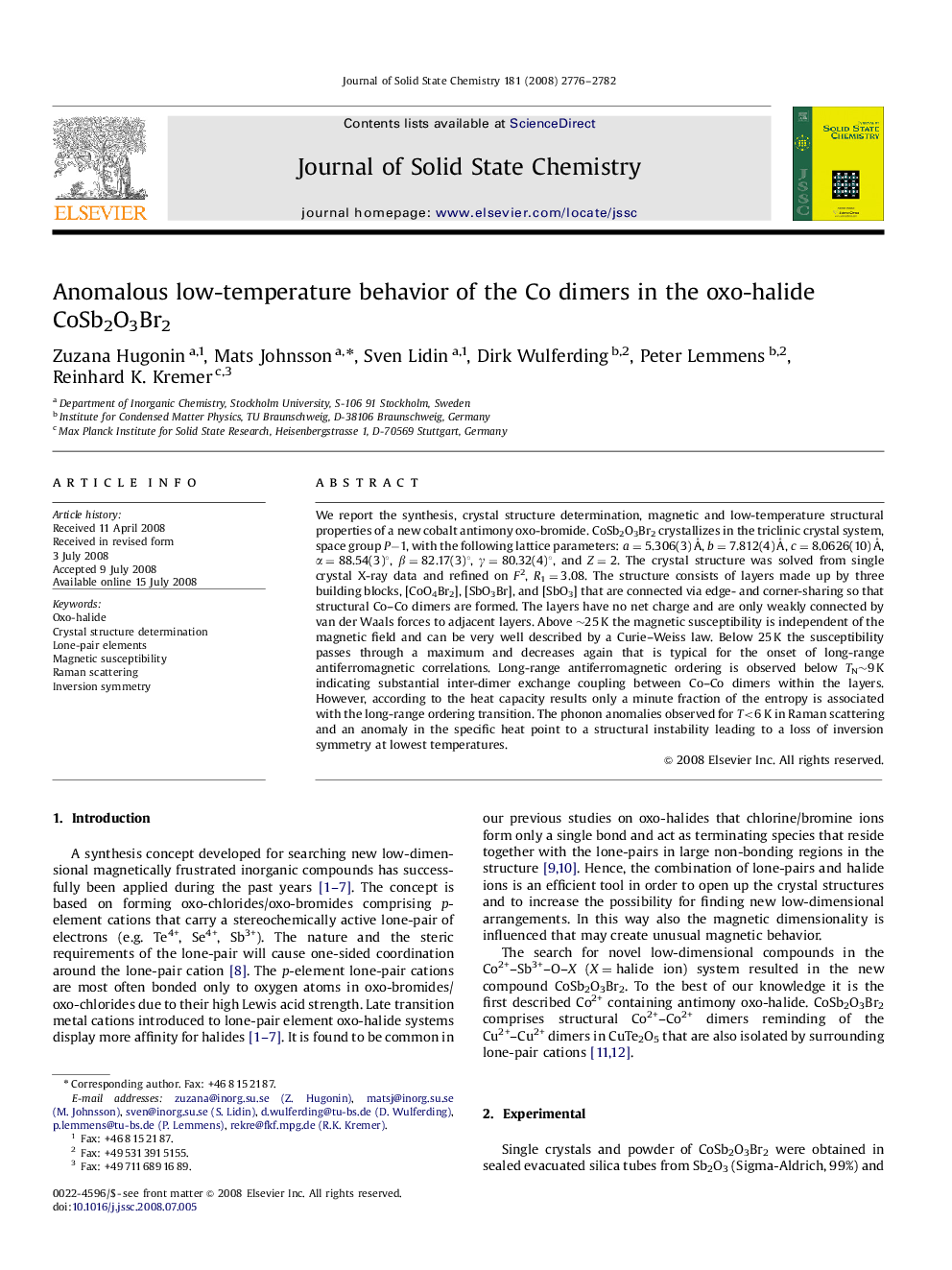| Article ID | Journal | Published Year | Pages | File Type |
|---|---|---|---|---|
| 1332032 | Journal of Solid State Chemistry | 2008 | 7 Pages |
We report the synthesis, crystal structure determination, magnetic and low-temperature structural properties of a new cobalt antimony oxo-bromide. CoSb2O3Br2 crystallizes in the triclinic crystal system, space group P−1, with the following lattice parameters: a=5.306(3) Å, b=7.812(4) Å, c=8.0626(10) Å, α=88.54(3)°, β=82.17(3)°, γ=80.32(4)°, and Z=2. The crystal structure was solved from single crystal X-ray data and refined on F2, R1=3.08. The structure consists of layers made up by three building blocks, [CoO4Br2], [SbO3Br], and [SbO3] that are connected via edge- and corner-sharing so that structural Co–Co dimers are formed. The layers have no net charge and are only weakly connected by van der Waals forces to adjacent layers. Above ∼25 K the magnetic susceptibility is independent of the magnetic field and can be very well described by a Curie–Weiss law. Below 25 K the susceptibility passes through a maximum and decreases again that is typical for the onset of long-range antiferromagnetic correlations. Long-range antiferromagnetic ordering is observed below TN∼9 K indicating substantial inter-dimer exchange coupling between Co–Co dimers within the layers. However, according to the heat capacity results only a minute fraction of the entropy is associated with the long-range ordering transition. The phonon anomalies observed for T<6 K in Raman scattering and an anomaly in the specific heat point to a structural instability leading to a loss of inversion symmetry at lowest temperatures.
Graphical abstractThe synthesis, crystal structure determination, and magnetic properties of the new layered compound CoSb2O3Br2 is reported. Structural Co–Co dimers are formed within the layers. The susceptibility below 25 K is typical for the onset of long-range antiferromagnetic correlations. Raman scattering and specific heat measurements both point to a structural instability leading to a loss of inversion symmetry below 6 K.Figure optionsDownload full-size imageDownload as PowerPoint slide
